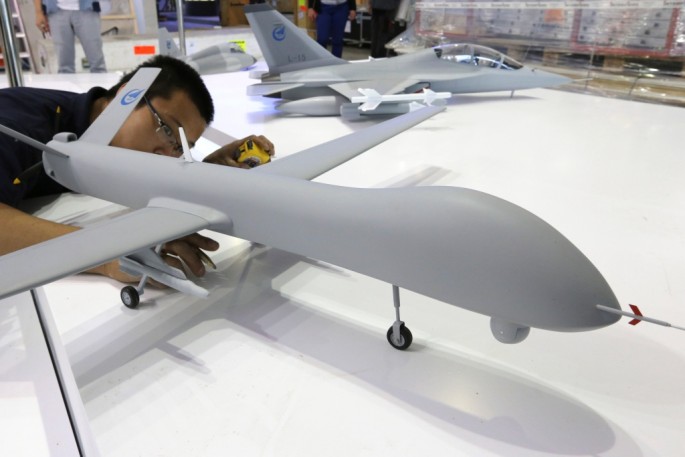Unmanned aerial vehicles (UAVs) or drones are becoming an increasingly critical component in China’s campaign against pollution, state-owned Xinhua News Agency reported on Thursday.
During the latest air pollution inspections in Beijing, Tianjin, and Hebei Province, law enforcement officials of the Ministry of Environmental Protection deployed drones to check on key areas, Xinhua said in its report.
Drones also played a key part in the discovery of at least one environmental violator in Hebei's Handan City, where air quality ranks as one of the worst in China. Footage captured by the drones revealed two outdated pieces of machinery hidden in the Hexin Iron and Steel Co. factory, prompting authorities to immediately conduct an inspection of the area.
The machines were later found out to have exceeded emission standards and should have been shut down before the end of 2013, one inspector said, adding that workers were also operating desulfurization equipment installed in the machines.
Six enterprises including Hexin were found to have violated pollution control guidelines during the inspections.
Drones have also been used to oversee the city of Foshan in south China's Guangdong Province, which contains 40,000 sources of industrial pollution and nearly 900 industrial parks scattered across the city's various villages.
The difficulty of supervising these areas has prompted authorities to use drones to prevent and treat pollution.
When law enforcement officials enter a plant, often illegal behaviors are stopped, making it hard to collect evidence, said Peng Cong'en, head of Foshan's environmental protection bureau.
Now, the drones can provide video evidence and record the law enforcement process, Peng added.
The drones used for environmental protection typically collect information using remote sensors, including high-resolution digital cameras, infrared and laser scanners, and magnetometers. Some UAVs are also fitted with an infrared thermal imaging unit that shows the operation of facilities at night.
"In this way, polluting firms fail to conceal their illegal behaviors," Peng said.
Other provinces that have adopted drones for use in environmental protection include Jilin, which flies drones to monitor the Mudanjiang river, a major waterway in northeast China, and Zhejiang, which uses the drones to prevent factories from discreetly pumping waste water into rivers and lakes.
UAVs bring a new trend to environmental protection. They also provide technical support in dealing with major environmental emergencies as well as assessment for construction projects, said Wang Qiao, an engineer with the Satellite Environment Center.
Wang said that a new system, which is capable of identifying the types, density and diffusion process of pollutants, will be implemented with the help of drones in the near future.



























